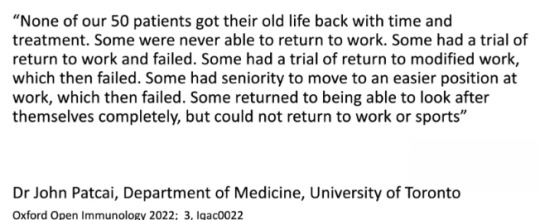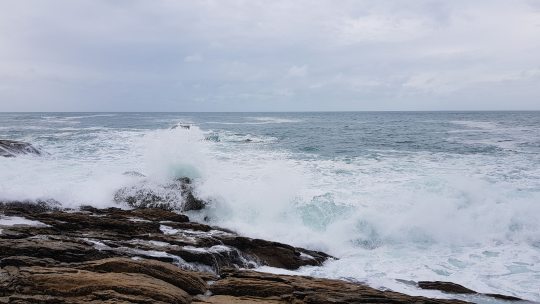#SARS
Explore tagged Tumblr posts
Text
Today is the third annual Long COVID Awareness Day. Here are some posters from @edania, a mutual from another site.
The original posters, prior to the edits, are from ACT UP during the AIDS-HIV denialism and the queer genocide under the Reagan administration,. This time, they're repurposed for COVID-19 or SARS-COV-2.

Source: Cohost/@edania (via Wayback Machine)

Source: Cohost/@edania (via Wayback Machine)
I am not able to find the original "Where Is Your RAGE" and "CDC Kills" posters (access denied) from mx. papaya which inspired the above posters. You can download free agitprop from mx.papaya's Ko-Fi.
#Long COVID Awareness Day#Long COVID#COVID#COVID-19#SARS#SARS-CoV-2#Mask Up#ACT UP#Protect Each Others#Resist Eugenics#CDC Kills#agitprop
219 notes
·
View notes
Text
Im callin it now, mpox is gonna be handled even worse than sars because people are already twisted over public health measures and refuse to get vaccinated against anything else, why would this be different
87 notes
·
View notes
Photo

(via If we don't develop a treatment we're f*cked)
“Not to be a downer, but this is the result of a study researches led at the University of Toronto following SARS1 patients who were disabled by the virus initially and how they were doing 20 years later.“
Screenshot “from the presentation by; Prof. Daniel M. Altmann, Department of Immunology and Inflammation, Imperial College, Faculty of Medicine, London, UK at #UniteToFight2024 https://unitetofight2024.world/program/”
+ important comment:
“A study on SARS 1 survivors, if you're curious:
2023 study in The Lancet on SARS 1 survivors
Lots had femoral necrosis (bone death), osteoporosis, and long-lasting, possibly immunologically-based fatigue.
Just a reminder that while there are similarities, these are two different diseases. SARS CoV 1 hospitalized 70% of infected and killed 10% at the time of containment. They're similar in disease profile and in genetics, but they are NOT the same.
COVID-19 is much more infectious and less lethal, and the range of post-viral complications is different. Plus, we don't know what treatments will come out for Long COVID patients, but medicine is much more advanced and there is much more funding for Long COVID than there was for SARS CoV 1 survivors, who were infected in 2003, and never had access to a vaccine.”
#post-viral illness#viruses#covid#coronavirus#post-viral sequelae#PASC#long covid#SARS1#SARS#me/cfs#immunology#study#reddit#comments#historical#archiving#2022
76 notes
·
View notes
Text
According to the popular theory of “epidemiological transitions,” first articulated by the Egyptian scholar Abdel Omran, the demise of infectious diseases in wealthy societies was an inevitable result of economic development. As societies prospered, their disease profile shifted. Instead of being plagued by contagion, they suffered primarily from slow-moving, chronic, noncommunicable conditions, like heart disease and cancer.
I confess to once being a true believer in this theory. I knew from visiting places like the south Mumbai ghetto where my father had grown up that societies that suffered significant burdens of infectious diseases were indeed crowded, unsanitary, and impoverished. We stayed in south Mumbai every summer, crammed with relatives into two-room flats in a dilapidated tenement building. Like the hundreds of other residents, we flung our waste into the courtyard, carried our own water in aging plastic buckets to shared latrines, and fitted two-foot boards over the thresholds to keep out the rats. There – as in other crowded, waste-ridde, poorly plumbed societies – infection was a constant reality.
But then, thanks to the same conditions that brought cholera to the shores of New York City, Paris, and London in the nineteenth century, writ large, the microbes staged their comeback. Development in once remote habitats introduced new pathogens into human populations. A rapidly changing global economy resulted in faster modes of international travel, offering these pathogens new opportunities to spread. Urbanization and the growth of slums and factory farms sparked epidemics. Like cholera, which benefited from the Industrial Revolution, cholera's children started to benefit from its hangover: a changing climate, thanks to the excess carbon in the atmosphere unleashed by centuries of burning fossil fuels.
The first new infectious disease that struck the prosperous West and disrupted the notion of a “postinfection” era, the human immunodeficiency virus (HIV), appeared in the early 1980s. Although no one knew where it came from or how to treat it, many commentators exuded certainty that it was only a matter of time before medicine would vanquish the upstart virus. Drugs would cure it, vaccines would banish it. Public debate revolved around how to get the medical establishment to move quickly, not about the dire biological threat that HIV posed. In fact, early nomenclature seemed to negate the idea that HIV was an infectious disease at all. Some commentators, unwilling to accept the contagious nature of the virus (and willing to indulge in homophobic scapegoating) declared it a “gay cancer” instead.
And then other infectious pathogens arrived, similarly impervious to the prevention strategies and containment measures we'd long taken for granted. Besides HIV, there was West Nile virus, SARS, Ebola, and new kinds of avian influenzas that could infect humans. Newly rejuvenated microbes learned to circumvent the medications we'd used to hold them in check: drug-resistant tuberculosis, resurgent malaria, and cholera itself. All told, between 1940 and 2004, more than three hundred infectious diseases either newly emerged or reemerged in places and in populations that had never seen them before. The barrage was such that the Columbia University virologist Stephen Morse admits to having considered the possibility that these strange new creatures hailed from outer space: veritable Andromeda strains, raining down upon us from the heavens.
By 2008, a leading medical journal acknowledged what had become obvious to many: the demise of infectious diseases in developed socieites had been “greatly exaggerated”. Infectious pathogens had returned, and not only in the neglected, impoverished corners of the world but also in the most advanced cities and their prosperous suburbs. In 2008, disease experts marked the spot where each new pathogen emerged on a world map, using red points. Crimson splashed across a band from 30-60° north of the equator to 30-40° south. The entire heart of the global economy was swathed in red: northeastern United States, western Europe, Japan, and southeastern Australia. Economic development provided no panacea against contagion: Omran was wrong.
— Pandemic: Tracking Contagions, from Cholera to Ebola and Beyond (Sonia Shah)
#book quotes#sonia shah#pandemic: tracking contagions from cholera to ebola and beyond#history#medical history#medicine#epidemiology#economics#wealth#poverty#academia#science#epidemiological transition#india#mumbai#abdel r. omran#stephen morse#hiv#west nile virus#sars#ebola
4 notes
·
View notes
Text

Sars Boy
#art#drawing#design#rellikart#rellik#rellik art#artwork#dark#sars#sketchy hours#sketch#dark art#horror art#horror#not batman#batman#bats#digital drawing#anime#manga#villain#comic
6 notes
·
View notes
Text
SARS-CoV wasn’t gone, it was only hiding. [...] Like an aftershock to a quake, a new case broke in Guangdong. Soon afterward, three more. One patient was a waitress who had been exposed to a civet. On January 5, 2004, the day the first case was confirmed, Guangdong authorities reversed policy again, ordering the death and disposal of every masked palm civet held at a farm or a market in the province. Wild civets were another question, left unanswered. [...] During the days that followed, more than a thousand captive civets were suffocated, burned, boiled, electrocuted, and drowned. It was like a medieval pogrom against satanic cats. This campaign of extermination seemed to settle the matter and made people more comfortable. That sense of comfort remained for, oh, a year or more—until other scientists showed that the doubts about reservoir identification were well-founded, that the judicious language of Guan Yi was percipient, and that the story was just a little deeper and more complicated. Woops, civets aren’t the reservoir of SARS. Never mind.
Regarding SARS-COV-1, the coronavirus that causes SARS, from Spillover: Animal Infections and the Next Human Pandemic (2012) by David Quammen
14 notes
·
View notes
Text

SARS & AR - For Those Who Strive. 2015 : Northern Electronics.
#electronic music#ambient music#SARS#Abdulla Rashim#2015#northern electronics#2010s#2010s electronic#industrial music#power electronics
5 notes
·
View notes
Text
SARS and the two-pot retirement system: key facts

The South African Revenue Service (SARS) recently announced that R21.4 billion has been paid out to taxpayers using the Savings Withdrawals Benefit of the two-pot retirement system. This system allows South Africans to access their retirement savings with certain tax implications. In this blog, we explore the two-pot system, its benefits, and the related tax considerations.
What is the Two-Pot Retirement System?
The two-pot retirement system offers South African taxpayers both flexibility and security. Under this system, retirement savings are divided into two pots: a savings pot and a retirement pot. This allows individuals to withdraw a portion of their savings before retirement, addressing immediate financial needs while still preserving long-term savings.
How SARS Regulates the System
SARS plays a vital role in overseeing the withdrawal process. Taxpayers must apply for a tax directive to access funds from their savings pot. Over 1.2 million South Africans have applied, with 1.14 million applications approved. It’s important to ensure that your tax reference number is correct and that you have no outstanding tax debt with SARS before applying.
Key Tax Implications of the Two-Pot System
Tax Clearance
Withdrawals from the savings pot are subject to tax rates ranging from 18% to 45%, based on the individual’s taxable income. Understanding these rates helps avoid unexpected deductions.
Outstanding Debt
SARS warns that any tax debt may be deducted from the withdrawal. However, if a payment arrangement is in place, the withdrawal process will proceed without deductions.
Tax Compliance
Staying compliant with SARS regulations is crucial to avoid penalties. Failure to disclose income or misreporting can lead to severe consequences, including fines and criminal charges.
Benefits of the Two-Pot Retirement System
The two-pot system provides greater financial freedom by enabling individuals to withdraw funds when necessary while safeguarding retirement savings. Additionally, SARS’s digital services, such as tax e-filing, simplify managing tax-related matters.
Practical Steps for Taxpayers to be SARS free
To navigate the two-pot system effectively, taxpayers should:
Verify Tax Information: Ensure that your tax reference number and personal details are accurate before applying for withdrawals.
Understand Tax Obligations: Familiarise yourself with the Tax Administration Act and its impact on your savings.
Seek Professional Guidance: If you’re unsure about your tax status, consult a tax practitioner or advisor. They can help clarify your rights and obligations under the new system.
Conclusion
The two-pot retirement system marks a significant change in how South Africans manage retirement savings. By staying informed about the system’s implications and adhering to SARS regulations, taxpayers can maximise their financial opportunities while minimising risks.
For more information about your tax liabilities or navigating the two-pot system, Latita Africa is here to assist with expert guidance tailored to your needs.
#tax#south africa#legal & advisory#personal finance#sars#two pot system#johannesburg#sandton#retirement
2 notes
·
View notes
Text

Market Square in Sars-Poteries, French Hainaut region of northern France
French vintage postcard, mailed in 1931
#historic#region#photography#vintage#poteries#sepia#france#market square#photo#briefkaart#french#1931#ansichtskarte#postcard#mailed#sars#postkarte#postkaart#carte postale#market#ephemera#square#postal#hainaut#northern#tarjeta#sars-poteries
3 notes
·
View notes
Text
CW: COVID-19

via @augieray@mastodon.social
Yes, I wish the general public takes COVID more seriously.
Coronavirus is not like the flu nor RSV and we've known about that since MERS and the first SARS. Also, massively disappointed with queer assimilationists since COVID is quite similar to HIV/AIDS and given how the government's eugenicist policies and their anti-LGBT campaigns wiped out many of the people who would have been elders in our communities today. Let's alone the deaf communities with the older generations of sign language folks becoming deaf and multi-disabled because of rubella, which is much more infectious than COVID.
I encourage you to read what Augie has to say since the screenshot is a snapshot of a five-parts thread.
Here is the spreadsheet where Augie took the time to read over 1 500 studies and summarized the findings of about 500 of them: https://docs.google.com/spreadsheets/d/12VbMkvqUF9eSggJsdsFEjKs5x0ABxQJi5tvfzJIDd3U/
#COVD#COVID studies#COVID reports#COVID resources#COVID-19#COVID-19 studies#COVID-19 reports#COVID-19 resources#SARS-CoV-2#SARS-CoV-2 studies#SARS-CoV-2 reports#SARS-CoV-2 resources#SARS#coronavirus#coronavirus pandemic#pandemic is not over#COVID is not over#mask up#wear a mask#clean air for all#clean air revolution#we keep us safe#informed consent#community defense#community defence#COVID precautions#COVID conscious
12 notes
·
View notes
Text
The Increased Risk of Arrhythmias Following COVID-19: What You Need to Know
The Increased Risk of Arrhythmias Following COVID-19: What You Need to Know #Covid19 #Arrhythmia #SARS #CoronaVirus #CardiacArrhythmia #Heart #HeartHealth
The COVID-19 pandemic has brought to light the numerous complications associated with the disease caused by the severe acute respiratory syndrome coronavirus 2 (SARS-CoV-2). While the respiratory symptoms of COVID-19 are well-known, there is growing evidence suggesting an increased risk of cardiovascular complications, including arrhythmias, in individuals who have contracted the virus. In this…

View On WordPress
#Arrhythmias#Can COVID cause cardiac arrhythmias?#Corona Virus#Covid#Covid-19#Heart Problems after COVID-19#Medical News#SARS#SARS-CoV-2
7 notes
·
View notes
Text








Petite sortie avec un pote
#pêche#fishing#isofishing#baitfishing#Fishingwithfriends#sea bream#sars#diplodussargus#bretagne#finistère#cornouaille#outdoor#seaside#baiedaudierne#saintguénolé
9 notes
·
View notes
Text


COVID SAFETY 101 (2023)
Covid (SARS-Cov-2) is short for severe acute respiratory syndrome coronavirus 2. The virus is airborne and neuroinvasive. It causes vascular disease and dysregulates immune systems. The pandemic is not over, the virus never became milder, and the government has continually lied about the threat. Because the virus is being allowed to spread freely, more dangerous variants are constantly emerging. We are all in serious danger.
COVID IS A BSL3 PATHOGEN
Biosafety level three pathogens are those that cause serious or potentially lethal disease through inhalation. Other BSL3 pathogens include yellow fever, West Nile virus, and tuberculosis. When Covid is handled in a lab setting, this is what people wear (left). Covid has always been classified as BSL3. Omicron is not mild.
COVID IS AIRBORNE
Covid is airborne. Staying six feet apart does not keep you safe. Social distancing was never enough to prevent transmission. Masks work, when worn properly. Washing hands and getting vaccinated do not stop Covid infections, because the virus is in the air and can linger in the air for hours.
More at CovidHelp.org
11 notes
·
View notes
Text
not to be mask-on on main but what the fuck is the point of being queer in 2024 if you're not gonna take any covid caution at all or worse, actively take covid risks
fash have signalled their willingness to be serially infected by a brain virus that will eventually have their number. it is a tremendous opportunity to let the trash take itself out and yet most queers are going full-assimilationist brunchcore in going down with the ship
it's okay to engage in sanitary self-defense and don't let eugenicists make you feel otherwise
3 notes
·
View notes
Text
Implications
Additional SARS pandemics are therefore expected, like those associated with influenza. Influenza viruses are at present vastly more diverse than SARS-CoV-2, but over decades we are likely to see significant diversification of SARS lineages, if IBV’s history is to guide us. The frequency of these future pandemics is unpredictable, as is their severity. Establishing the “SARS” category as proposed here is necessary for proper preparation for such future events.
Influenza pandemics have all been self-limiting, and early in the first COVID-19 pandemic it was regularly interpreted in a similar manner, i.e. as something that will naturally dissipate. More recently that has shifted towards an acceptance of “endemicity”, where “endemicity” is sold as a state of constant circulation that is not overtly disruptive to normal societal functioning rather than the actual scientific definition, which is constant circulation of the pathogen, and which tells us nothing about its impacts on humans.
If we are to instead view the first COVID-19 pandemic as the initial, and so far appearing to be permanent introduction of an entirely new type of pathogen (SARS) in the human population, and to accept the possibility of many novel SARS serotypes and strains appearing in the future, a rather different picture emerges. So far Omicron exhibits the lowest mortality rate of all sarbecoviruses known to have infected humans, but SARS-1 was much more severe than SARS-2, and the evolution of the first SARS2 serotype was towards more severe disease27 and current data suggests a similar trajectory within many Omicron lineages28.
Therefore it cannot be assumed that all future pandemic serotypes/strains will be “inconsequential”, or even tolerable (where “tolerable” has now been established to mean anything that does not break healthcare systems to the point where refrigeration trucks need to be called in to store the dead bodies), as subsequent iterations of viral evolution that gain a strong fitness advantage due to major antigenic innovations could revert to substantially more pathogenic states, as commentators have previously warned4,25. An understanding of the course of SARS-CoV-2 evolution so far as having already spawned two separate pandemics is needed to raise awareness of and prepare for these possibilities.
9 notes
·
View notes